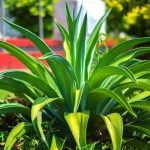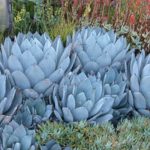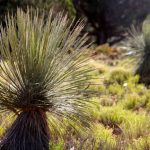Growing Guide for Agave Ovatifolia: Caring for Whale’s Tongue Agave
Discover the neglect-friendly Agave ovatifolia, also known as Whale’s Tongue Agave, a stunning succulent that thrives in xeriscape gardens.
Whale’s Tongue Agave, scientifically known as Agave ovatifolia, is a mesmerizing perennial succulent cherished for its thick rosette of blue and gray leaves, creating a uniquely beautiful visual presence in gardens. Belonging to the Asparagaceae family, this hardy plant can endure severe winters while adding a touch of elegance with its blue foliage.
Native to North-eastern Mexico, Agave ovatifolia was brought into cultivation by Lynn Lowrey in Texas during the mid-1980s. This succulent, with its vivid blue leaves, is a perfect addition to any garden, offering a striking contrast against other plants.
Ready to grow your own Whale’s Tongue Agave? Let’s delve into the essential care tips for this attractive blue succulent.
Quick Caring Tips
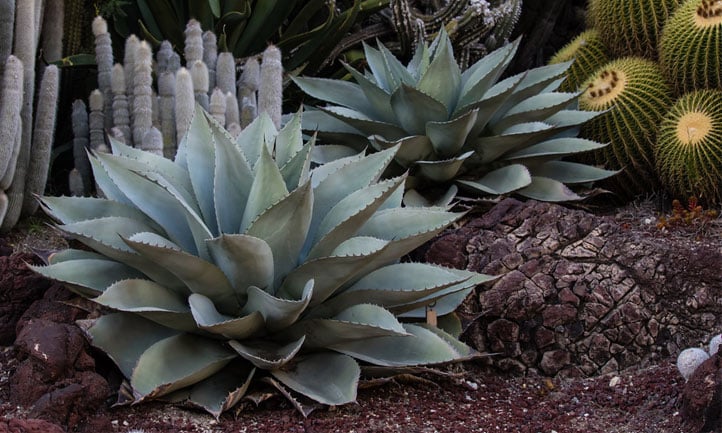
| Common Name(s) | Whale’s tongue agave |
| Scientific Name | Agave ovatifolia |
| Family | Asparagaceae |
| Height & Spread | 3-4′ tall and 6′ wide |
| Light | Full sun to light shade |
| Soil | Well-draining |
| Water | Low |
| Pests & Diseases | Root rot, anthracnose, snout weevil |
All About Whale’s Tongue Agave
Agave ovatifolia, a solitary succulent, can reach heights of 3-4 feet and spreads up to 6 feet wide. Its rosette showcases cupped leaves with a unique texture, earning it the nickname “Whale’s Tongue Agave.” Featuring small teeth along the margins and a dark gray terminal spine, this plant adds a touch of elegance to any garden.
It typically takes about a decade for Whale’s Tongue Agave to mature and produce its greenish-white flowers once. After flowering, the rosette dies, but the plant continues its life cycle through bulbils and seeds.
Whale’s Tongue Agave is part of the monocot genus native to arid regions of the Americas. This species, characterized by its toothed leaf margins, gets its name from the combination of “ovatus” for egg and “agauos” meaning ‘illustrious’.
While closely related to Agave ovatifolia, Agave americana, or Century Plant, is a larger rhizomatous variety tolerant to high temperatures and drought, but it requires careful containment to prevent unchecked spreading.
Another relative, Agave attenuata or Foxtail Agave, lacking threatening spines, boasts harmless, gray rosettes and hails from central Mexico, not the northeastern region like Agave ovatifolia.
Lastly, Agave tequilana, or Blue Agave, used in tequila production, grows tall flowering stems of up to 20 feet. Its greenish-white flowers signal the plant’s end as a non-offsetting succulent.
Care Tips for Whale’s Tongue Agave
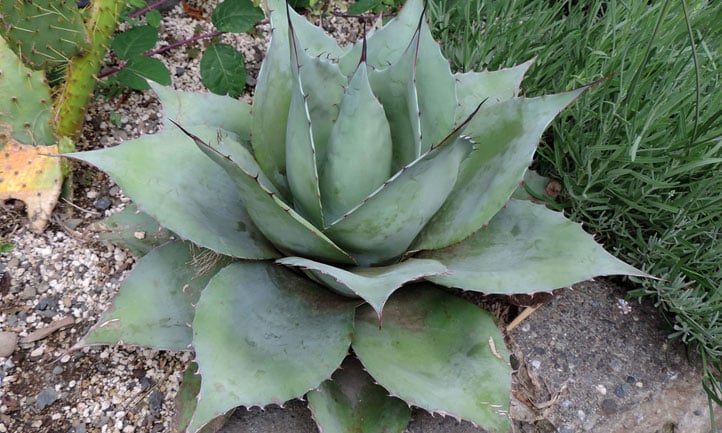
Whale’s Tongue Agave is drought-tolerant, winter-hardy, and low-maintenance, thriving in full sun or partial shade. Ideal as accent plants near sunny windows, they prefer well-drained soil and minimal moisture.
Light and Temperature
Thriving in full sun to light shade within USDA Hardiness Zones 7-11, Whale’s Tongue Agave excels in neglect, making it perfect for succulent gardens. They can tolerate more shade in hotter climates due to their drought-resistant nature.
Water and Humidity
Agave ovatifolia enjoys infrequent watering, making them suitable for environments prone to droughts. The succulents require well-drained soil to prevent waterlogging, enhancing their resilience to various conditions.
Watering Guidelines
Initially, water the young plants every 4-5 days for the first month to aid in their establishment. As they mature, reduce watering frequency to once a week, then to every other week. Once fully established, water occasionally – every couple of weeks in summer and monthly in winter, ensuring the soil’s top inch remains dry.
Soil
Agaves thrive in well-draining soil, with sandy or rocky textures being preferred. Soil pH isn’t a significant concern for these plants. They should ideally be grown under direct sunlight from the start, rather than being transplanted.
Fertilizer
Avoid fertilizing Agave ovatifolia whale’s tongue agave as it can lead to undesired flowering, detrimental to the plant’s longevity. Refrain from feeding to ensure prolonged plant health.
Transplanting Steps
- Choose a sunny spot with well-drained sandy soil for transplantation.
- Trim damaged roots before placing the agave in a prepared hole.
- Ensure the plant is positioned correctly and back-fill the hole firmly.
- Use stones to support the roots and provide ample water and sunlight.
- Protect the plant from excessive heat with a shade cloth if needed.
- Water thoroughly post-transplant.
Propagation Tips
Agave ovatifolia can be propagated from seed or bulbils. Select a well-lit area for propagation, as these plants do not produce offsets.
Pruning Technique
Prune Whale’s tongue agave at the end of winter using a sharp knife. Trim dead leaves, shape the plant, but avoid excessive cutting to prevent water storage disruption.
Troubleshooting
Common Issues
Ensure adequate light for your agave to prevent leaf discoloration or tips burning. Adjust light exposure as needed.
Disease Management
Watch out for signs of rot due to overwatering. Remove affected leaves and relocate the plant if necessary. Anthracnose may also occur, causing lesions on leaves.
Pest Control
Beware of agave snout weevils that can harm the plant; promptly remove affected specimens to protect the rest.
FAQs
Q: How big does agave ovatifolia get?
A: They can grow up to 3-4 feet tall and spread up to 6 feet in width.
Q: Do agave plants need full sun?
A: Yes, they thrive in full sun with minimal water and excellent drainage.
Q: Does agave need a lot of water?
A: No, overwatering can harm this drought-tolerant plant.
Q: Are agaves succulents?
A: Yes, all agaves are succulents characterized by spiny-tipped leaves and striking rosettes.
Q: How many years does an agave plant need to mature?
A: Agaves require at least 7 years to reach maturity before harvesting.
Q: Is the agave plant toxic?
A: While not poisonous, agave plants can secrete skin-irritating sap.
Q: What other agave variants can be grown in the garden?
A: Consider Agave artichokes or Agave octopus for low-maintenance options with similar care requirements.

